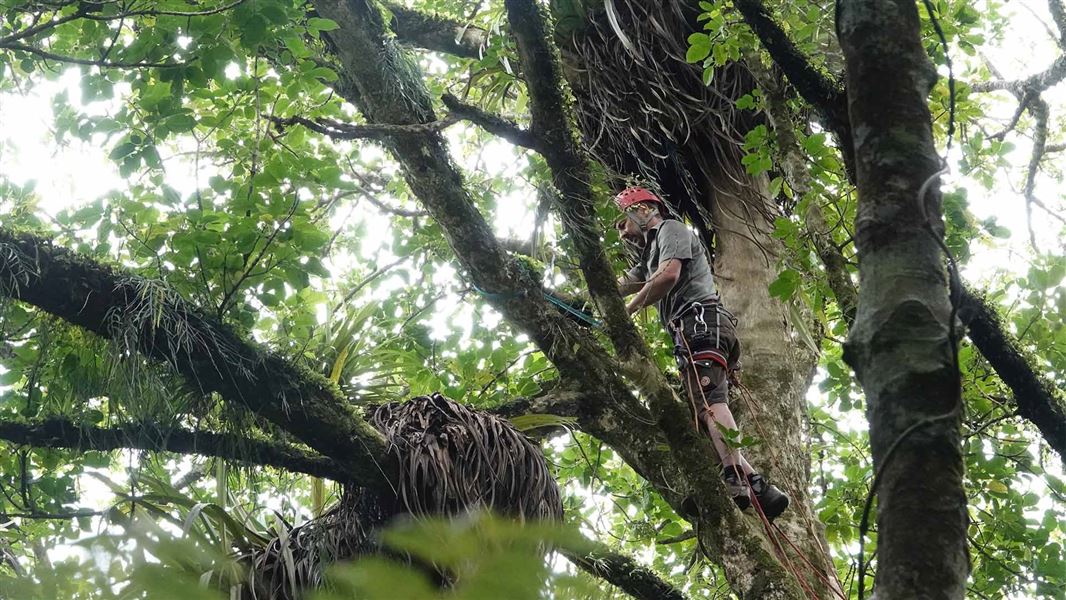Archived content: This media release was accurate on the date of publication.
Date: 20 November 2020
Expert tree climbers were called in to hoist the plants into their new homes in the Kaimai Mamaku Conservation Park. The highest planting spot was almost 25 metres above the ground and the climb was not for the faint-hearted.
Several years in the planning, this project involved epiphytes – plants that grow on other plants, often high up in the tree canopy. Usually unnoticed and unappreciated because they are out of sight from casual observation, epiphytes are an important part of the forest ecosystem.
AFP chose two initial species of shrub epiphytes to restore to the Aongatete Forest near Katikati. Kirk’s Kōhūhū (Pittosporum kirkii), which is classified as At Risk – Declining, and tāwhiri karo (Pittosporum cornifolium). Both species can grow into spreading shrubs or even small trees, many metres off the ground.
The natural process for how they come to grow where they do in the host tree’s canopy plays out over many, many years. Initially, mosses and leaves collect in the forks of major branches. The nutrient rich nooks provide for plants like astelias to grow and cling by their roots to the host tree. These slow-growing, flax-like plants eventually form ‘nests’ and collect leaf litter, with large nests containing considerable organic material, which absorb water like a sponge. These nests make the ideal habitat for seeds of shrub epiphytes to germinate and grow, arriving via our native birds.
If their precarious lifestyle and niche ecological requirements were not enough, they are also vulnerable to possum browse. Kōhūhū has fleshy leaves and seems particularly tasty, hence its current conservation status.
Having carried out predator control in the forest since 2006 and with the flourishing of birds like rifleman and robin, AFP are also keen to help restore all parts of the forest flora that have disappeared. The decision to try shrub epiphytes was the brainchild of AFP’s Chairman James Denyer.
“We knew it wouldn’t be easy, but this was something innovative that no-one else was doing,” He says.
“It’s great that revegetating marginal land with natives is now commonplace, but planting natives on bare land is invariably restricted to colonising and tall forest species, not the more unusual plants that only thrive in old-growth forests. We are still losing some of that biodiversity.”
The first job was to source the seeds. Given where the plants grow, this wasn’t going to be easy. Adding to that, AFP considered eco-sourcing seeds from as close as possible to the restoration area was important. Luckily, James found suitable plants growing towards the top of the Kaimai forest. Even better, the wind-battered and stunted forest in which they were growing put some within reach of harvesting by hand. Other times though, it was a matter of sifting through the leaf litter at the base of a host tree searching with a keen eye for the small black seeds. DOC gave approval to collect the seeds first before James germinated and grew them on until a suitable size for planting.
A large puriri tree full of astelia nests on the short loop track at Aongatete was selected for transplanting the young epiphytes. Even better, the tree with its spreading branches above the track was in the perfect spot for future visitors to see the results of the restoration project.
AFP looks forward to monitoring the plants and seeing them grow. Once established and big enough, AFP intends to add signage to tell the story for visitors to the forest.
Contact
For media enquiries contact:
Email: media@doc.govt.nz
